News
SCLT Talk Features Artist Hans Kleiber
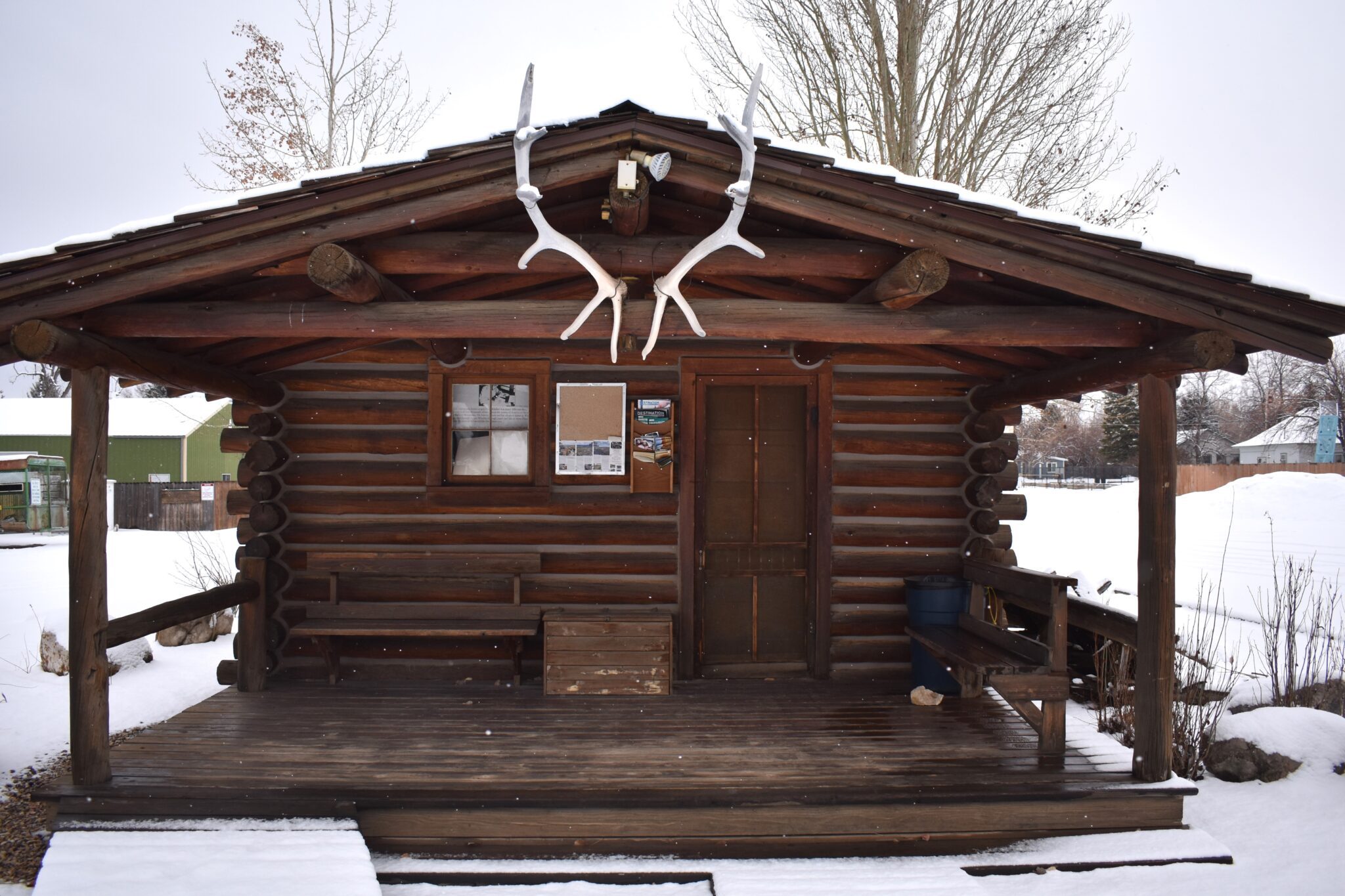

Published
2 years agoon
By
cvannoy
Carrie Edinger, SCLT Historic Program Manager, and Sonja Caywood, manager of the Hans Kleiber Studio, shared the stage on Tuesday, Jan. 17, at the Tongue River Valley Community Center in Dayton talking about Hans Kleiber, Artist of the Big Horns. A large crowd of around 30 people attended the talk.
Edinger presented the first part of the program, talking about Kleiber’s years as a forest ranger on the Bighorn National Forest.
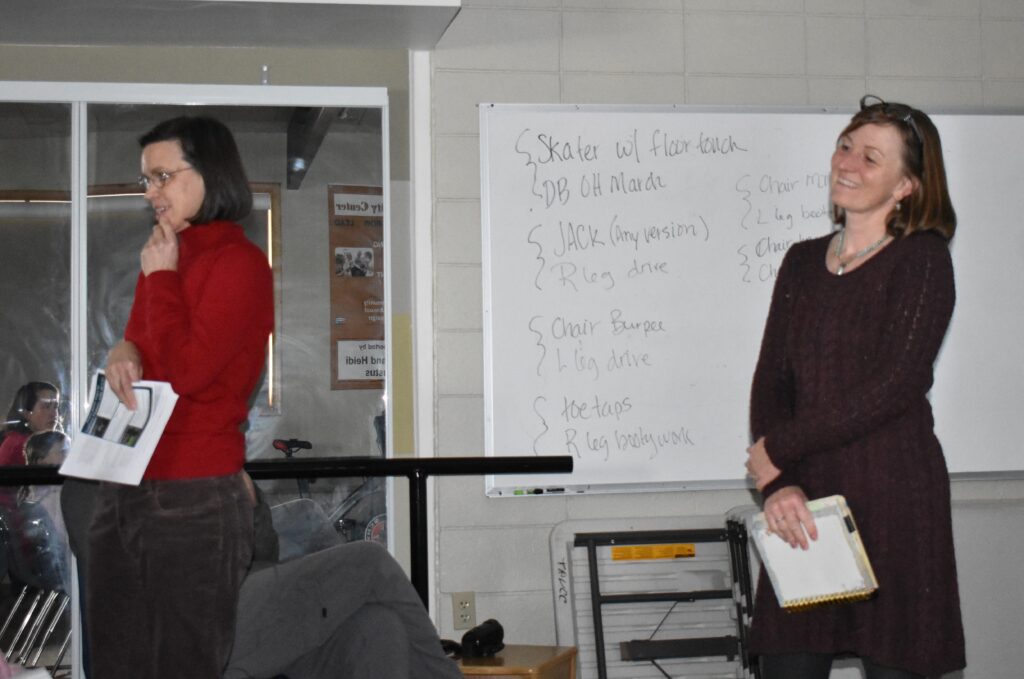
Hans Norbert Kleiber was born in Austria in 1887, and he spent his early boyhood there. His family emigrated to the United States while Kleiber was young, and they settled in Massachusetts.
As a youngster, Kleiber had always dreamed about the Western Frontier, and his first stop when he came west was Denver, where he walked into the forest service supervisor’s office, and inquired about a job. However, at the time he was not yet 21, so he took a job working for the Forest Reserve. Edinger tells how he came to Wyoming.
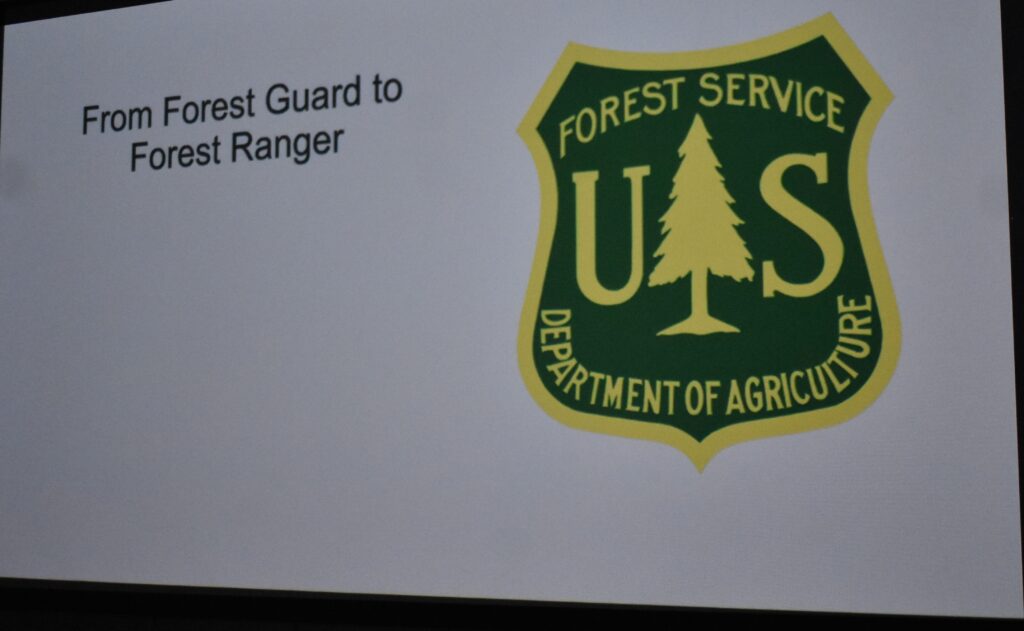
Hans Klieber, in some of his writings, describes some of the time he spent working at the lumber camp.
The time period when Kleiber came Bighorn Mountains was the very beginning of the forest service. The Big Horn National Forest Reserve was established in 1897 by President Grover Cleveland. The reserves were managed under Department of the Interior and 1905 transferred the management of the forest lands to the Department of Agriculture. In 1905, the Bighorn National Forest was largely undeveloped backcountry. In 1899 there were 30,000 cattle and 150,000 head of sheep.
In 1906 he did his first work for the Forest Service, when he was hired to mark timber for $3 per day. This was for the first timber sale of any size that the government had made. The marking of the timber required in the contracts required the be trees to be cut to a specified length. Kleiber had calipers to measure the tree exactly as required.
In 1908 Kleiber took an exam to become a forest ranger, but he was still underage and he was not a yet a United States citizen. He worked as a forest guard, mostly working on fire prevention and supervision.
Later, he did become a forest ranger, and during 1913 and 1914 one of his first forest service assignments was building telephone lines. There was a line to the Porcupine Ranger District and a line from Woodrock to Shell.
During the 1914 time period he worked on the Tongue River District which was the largest grazing district on the forest.
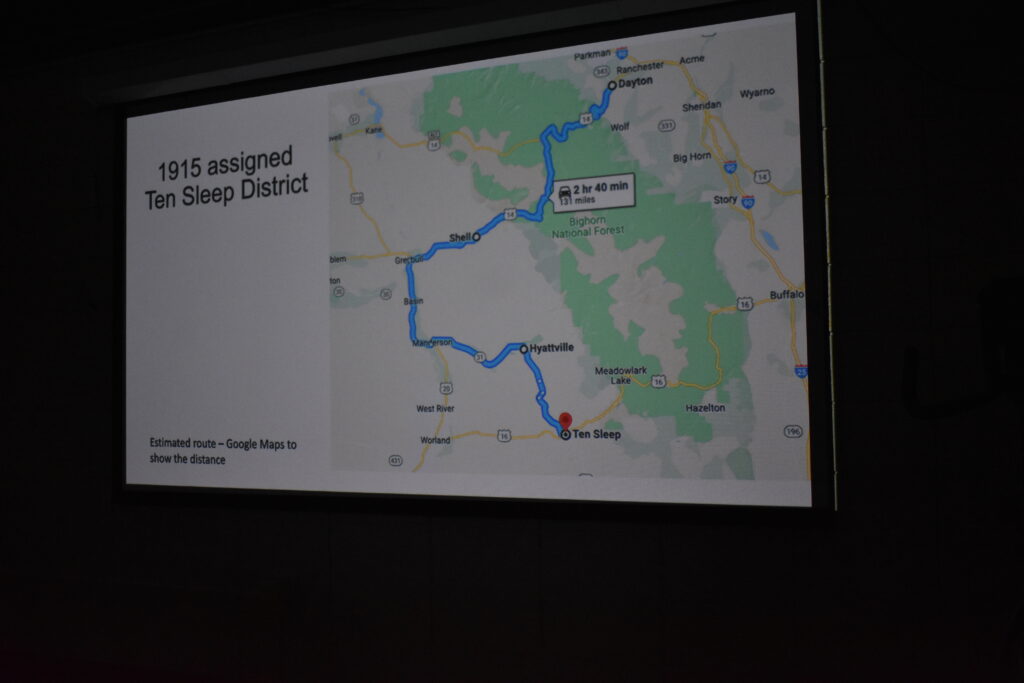
Edinger describes how he traveled from Dayton to Tensleep in 1915.
During 1916 and 17 he was stationed in Nebraska, and later he was told to report to Montana. In 1920 he was a ranger-at-large. In the 1920s he was asked to explore the Washakie and Wind River Mountain Ranges, and in 1922 he climbed Gannet Peak, the highest mountian in Wyoming.
Kleiber retired from the forest service in 1923 and purchased a house in Dayton. He had lived briefly in New York and experienced the arts, and he decided to become an artist to capture all of his experiences out west.
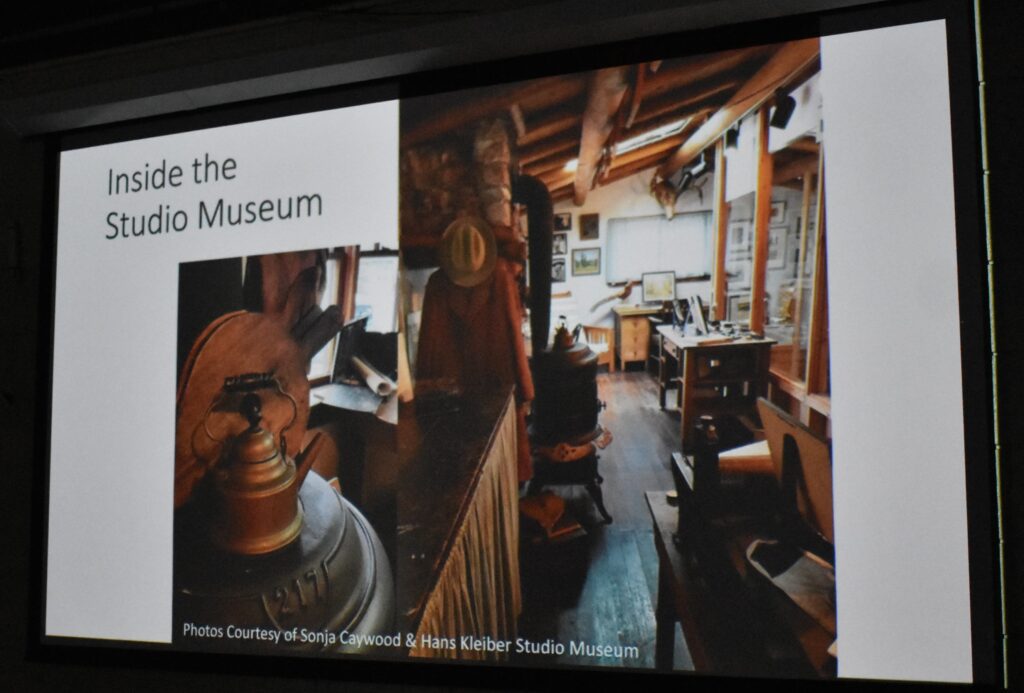
Caywood took over the talk, and spoke about his art work and his studio. She said that in the early 1990’s Kleiber’s family sold the property and donated the cabin to the town of Dayton.
She talked about moving Kleiber’s studio cabin from its original location to where it now stands on Dayton’s Main Street.
It was dedicated July 28, 1991, and at first it was run by volunteers. In 2001 Caywood took over as manager. She said that during the first year 430 people dropped by the museum. Today it is open by appointment only during the summer. She said when she first worked in the studio and museum local people would drop by and tell her stories about Kleiber.
Caywood talked about Kleiber’s etchings, and how difficult it is to do an etching. She talked about the press he used to make the prints.
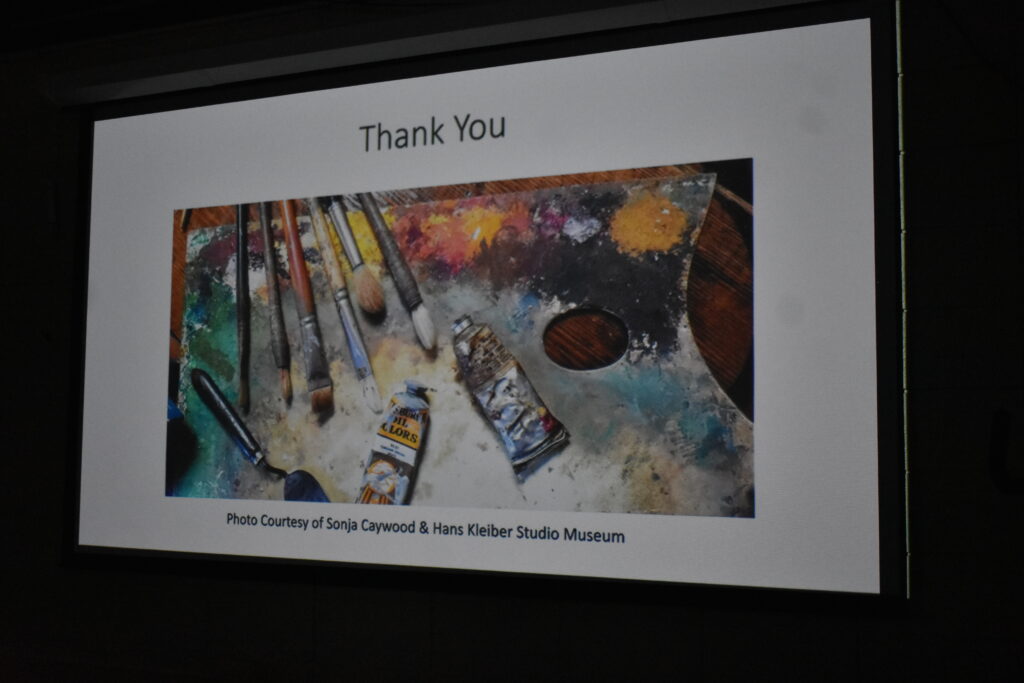
Kleiber was mainly a self taught artist, he did serve a brief apprenticeship with an artist in New York, but other than that he had no formal training.
Klieber’s legacy endures in Dayton, and one can visit the studio and see many of his etchings and learn about some of the history of the “Artist of the Bighorns”
